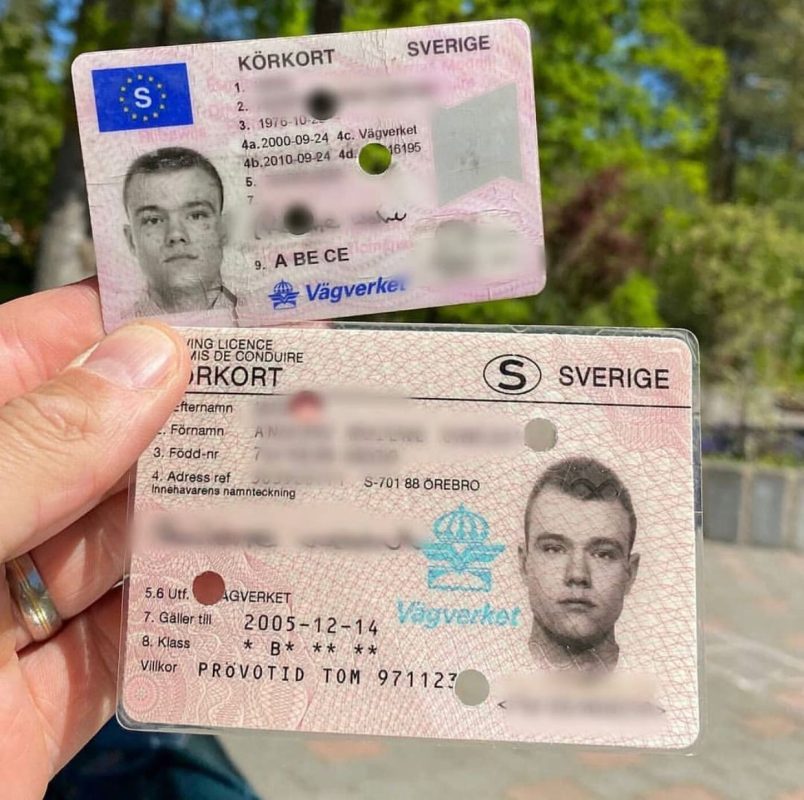The Ultimate Glossary Of Terms For Driving License Id-Handling 2025
페이지 정보

본문

The Future of Driving Licenses: ID Handling in 2025
As innovation continues to develop at an unmatched rate, numerous sectors are embracing developments to boost user experience and performance. Among the locations experiencing substantial improvement is identity management, especially worrying driving licenses. With the introduction of digital licenses and advanced identification techniques, the landscape of driving license ID handling is anticipated to go through considerable changes by 2025. This post explores the anticipated developments in driving license ID handling, the ramifications for users, and responses regularly asked concerns about the future of driving licenses.
The Evolution of Driving Licenses
Driving licenses have actually typically functioned as a method of determining a person's authority to run an automobile. They likewise serve multiple secondary purposes, consisting of age verification and identity confirmation for banking and travel. Nevertheless, the physical card system has restrictions, consisting of dangers of counterfeiting, loss, and out-of-date info. As society gravely counts on effective and secure identification systems, the shift towards digital licenses is ending up being increasingly popular.

Existing Trends in Driving License ID Handling
Digital Licenses: Many states are piloting digital driving licenses that allow users to save their qualifications on their mobile phones. These digital licenses are designed with advanced security functions, consisting of biometric information, and can be scanned or shared safely.
Blockchain Technology: Some jurisdictions are checking out blockchain to boost the security and authenticity of driving licenses. This technology guarantees that info can not be damaged which the information is quickly verifiable.
Facial Recognition: Increasingly used in recognition practices, facial acknowledgment innovation can expedite the procedure of verifying an individual's identity against their driving license. This innovation also assists decrease fraud and preserve the integrity of the licensing systems.
Multi-Functional Licenses: Future driving licenses might incorporate additional features such as health records, travel documentation, and even payment systems, providing a comprehensive identity option.
The Benefits of Digital Driving Licenses by 2025
The shift toward digital driving licenses presents a number of advantages, KöRkortsbok På NäTet consisting of:
Convenience: Users can access their licenses anytime, which removes the requirement for physical cards. This is especially helpful when individuals forget their license, as digital copies can be retrieved rapidly.
Security: Advanced security procedures can minimize the threat of identity theft, fraud, and unauthorized duplication. Digital licenses typically consist of file encryption and biometric confirmation.
Efficiency: Reduced wait times at federal government workplaces and during traffic stops, as police can validate digital licenses instantly.
Implications for Users
While the advancements in driving license ID dealing with present numerous advantages, they also feature obstacles. Users require to adjust to brand-new innovation and guarantee they comprehend the modifications and their ramifications. Here are some considerations:
Privacy Concerns: With increased digital footprints, there will be heightened issues over data personal privacy and how biometric data is stored and used.
Availability Issues: Individuals without access to smart devices or digital technologies might deal with barriers to obtaining and using digital licenses.
Regulatory Compliance: With different jurisdictions adopting various systems and processes, users need to know their local laws relating to digital licenses and identification.
Prepared For Changes in Driving License ID Handling by 2025
| Aspect | Existing Status | Expected Change by 2025 |
|---|---|---|
| License Format | Physical cards | Primarily digital licenses |
| Verification Process | Manual checks | Automated biometric confirmation |
| Security Measures | Standard holograms and functions | Advanced encryption and blockchain |
| Jurisdictional Differences | Fragmented procedures throughout states | More standardized nationwide systems |
| User Interaction | In-person renewals and checks | Mobile applications for management |
Frequently asked questions
1. What is a digital driving license?A digital driving license is an electronic variation of a traditional driving license that is saved on a mobile phone. It can be utilized for recognition and confirmation in various circumstances, with boosted security functions to avoid fraud.
2. How will digital licenses enhance security?Digital licenses make use of encryption and biometric data, making them harder to create or misuse compared to standard cards. In addition, blockchain technology can guarantee information credibility and integrity.
3. Will everybody be required to change to a digital license?While many jurisdictions are moving towards digital licenses, policies may differ. Users are motivated to talk to their local licensing authorities for particular standards.
4. What are the possible downsides of digital licenses?Some possible drawbacks consist of personal privacy concerns regarding data storage, availability issues for people without smartphones or digital literacy, and the requirement for a robust regulatory framework to manage security and user rights.
5. How can I prepare for the shift to digital licenses?Stay notified about local efforts relating to digital licenses, check out offered mobile applications for handling recognition, and cultivate digital literacy to navigate brand-new innovations confidently.
The future of driving licenses and ID handling is poised for substantial evolution by 2025. As digital licenses end up being more widespread, users will experience enhanced security, convenience, and performance. Nevertheless, alongside the benefits come obstacles that will need public awareness and adjustment. Stakeholders need to prioritize education, policy, and accessibility to ensure a smooth shift that empowers people with the recognition tools of the future. As innovation advances, so too will the approaches through which society manages identity, especially vital in procedures as fundamental as running a motor automobile.
- 이전글20 Trailblazers Are Leading The Way In 3 High Bunk Beds 25.06.21
- 다음글The 10 Most Terrifying Things About Coffee Machine Tassimo 25.06.21
댓글목록
등록된 댓글이 없습니다.

